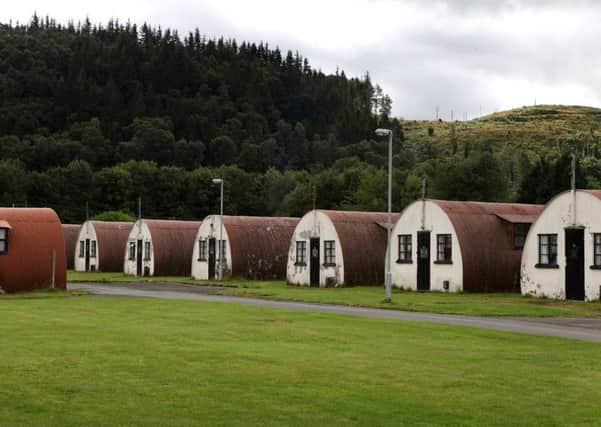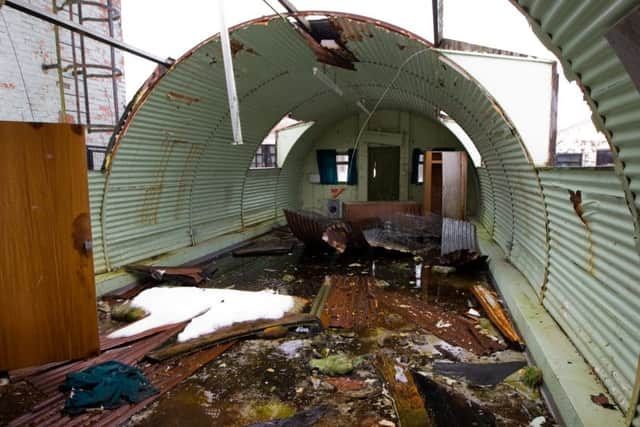Scots Nazi PoW camp could become holiday hostel


Now the former Second World War high-security camp at Cultybraggan near Comrie in Perthshire is set to become arguably the country’s most unusual tourist accommodation.
In a project costing £600,000, the Comrie Development Trust (CDT) which runs the site hopes to convert and refurbish ten B-listed Nissen huts at the site to create bunkhouses. The plan is to cash in on a trend for holidaying in unusual places – so called “heritage hutting”.
Advertisement
Hide AdThe site, the last remaining example of a purpose-built prisoner of war camp in the UK, has been owned by the locally run trust since it exercised a community right-to-buy option in 2007.


Comrie Development Trust chairwoman Emma Margrett said: “This is a really promising project and has only been possible due to the foresight of the community when they bought the camp.
“Historic Scotland’s grant offer is conditional upon proposals being approved and match funding being obtained.
“The total building work for the heritage self-catering project is estimated at £578,500 and a funding package has been put together with funds sought from Historic Scotland, Scottish and Southern Energy and the Heritage Enterprise fund.”
Built in 1939, the remote maximum security site contained up to 4,000 German prisoners at a time, many of them the toughest Afrika Korps and SS troops.
The ringleaders of an infamous 1944 “Devizes Plot” to free 250,000 PoWs from camps throughout the country and then mount an attack on the UK from within were consigned to Camp 21, as Cultybraggan was known during the war years.
Advertisement
Hide AdHess is reputed to have been held there for a night en route to England after crash landing at Eaglesham, south of Glasgow, although the story has been disputed by some.
In perhaps most notorious incident in the camp’s history, five Nazi prisoners held there murdered a fellow prisoner, Sergeant Wolfgang Rostberg, whose zeal for the Nazi cause had, they believed, waned in captivity.
Advertisement
Hide AdThe five were tried, found guilty and eventually hanged at Pentonville Prison.
The complex was retained as a training camp after the war and regulars, territorials and army cadets were frequent visitors for the next 60 years until the MoD closed it down in 2004.
There was a fear that the site would be used for housing, out of keeping with the community, when it was put up for sale by the government for £350,000.
It was bought by the trust, which has strived to give the camp a new lease of life.
The 64-acre site still contains numerous Nissen huts and buildings and even an underground bunker, making it the most complete prisoner-of-war camp remaining in the UK.
The buildings will now be restored to a condition stipulated by Historic Scotland, which has given its backing to the project, offering a grant of up to £257,500.
Advertisement
Hide AdAs part of the funding, individuals are being invited to invest in community shares which, it is hoped, will raise £35,000.
It has been estimated that “heritage hutting”, taken together with the other projects, could increase visitor levels to more than 15,000 after five years, creating the equivalent of 20 full-time jobs and boosting the local economy by up to £2 million.
Advertisement
Hide AdDr Ann Petrie, chairwoman of the Comrie Heritage Group, added: “This project is just one of a number of projects that CDT is working on to further progress Cultybraggan and by investing in community shares, individuals will be helping to preserve part of the nation’s heritage and will contribute towards benefiting the community.
“Any surplus generated by the business will be invested in restoring the rest of Cultybraggan camp and in helping community projects in Comrie.”
A spokesperson for Historic Scotland confirmed that the agency had now received an application from the Comrie Development Trust concerning the redevelopment of “seven, B-listed WWII structures” – Nissen huts – at the Cultybraggan site into self-catering accommodation.
The spokesman said: “This is a unique project, which will see a number of these corrugated metal structures brought back in to use and enhance the existing refurbishment work that has been carried out to date by the local trust as part of wider plans for mixed use development at the site.
“Whilst we have accepted the application in principle, we will now look to fully assess the requirements of this project before confirming a final amount of grant funding.”